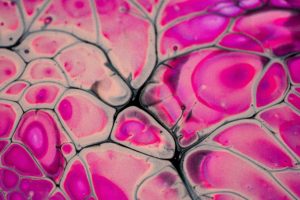
Giant Cell Arteritis Clinical Features
Symptoms of Giant Cell Arteritis (GCA) can present as subacute, but abrupt presentations can occur in some patients. Many symptoms are nonspecific of GCA, but others can strongly suggest the presence of GCA.
Constitutional symptoms: Systemic symptoms are common and include fever, weight loss, malaise, and fatigue. Fevers are usually low grade, but in up to 15% of patients, the fevers can be high exceeding 102.2 degrees F and can lead to misdiagnosis of an infection.
Headache: Headaches in the temporal region is a common presentation of GCA. There is no defining characteristic of this headache except for tenderness of the scalp to touch. The critical factor in the diagnosis is that the headache is new. Headache is the chief complaint in most patients with GCA, but a Nurse Practitioner must elicit this information with direct questioning. Headaches in GCA can also be frontal, occipital, or generalized.
Jaw claudication: Nearly one-half of GCA patients experience jaw claudication. Sometimes trismus (commonly called lockjaw) can occur rather than fatigue of the mastication muscles. There are two striking features of jaw claudication: 1) rapid onset after the start of chewing and 2) the ensuing severity of pain. This significant symptom must be elicited by direct questioning since patients can fail to mention it during the history interview.
Transient visual loss (amaurosis fugax): Sometimes transient monocular (and rarely, binocular) impairment of vision can be an early manifestation of GCA. The transient monocular visual loss (TMVL) causes an abrupt partial field defect or temporary curtain effect in the vision field of one eye. Those with polymyalgia rheumatica (PMR) or GCA are sensitive to vision loss. When evaluating, inquire when the patient tries to cover each eye if explicit monocular visual loss occurs. If so, it heightens the concern for GCA.
Permanent vision loss: The most feared complication of GCA is permanent vision loss. The vision loss is usually painless and sudden, can be partial and complete and may be unilateral or bilateral. Vision loss in GCA is rarely reversible. If vision is intact after treatment with an adequate dose of glucocorticoids, the risk is virtually eliminated.
Labs that can be useful when assessing GCA include CBC, BMP, erythrocyte sedition rate (ESR), and C-reactive protein (CRP). A normochromic anemia can be present in GCA and can often be profound. Many patients can have a reactive throbocytosis. The leukocyte count is usually normal. Serum albumin is often moderately decreased at diagnosis but responds quickly to the start of glucocorticoids. Elevated alkaline phosphatase can occur. Lastly, a typical laboratory finding in GCA in many patients is elevated ESR (up to 100 mm/hour) and CRP. Although neither ESR or CRP is specific to GCA, they can help diagnosis the probability of the disease. The gold standard for diagnosis is temporal artery biopsy, but treatment should not be delayed while waiting on results.
Treatment of Giant Cell Arteritis
Treatment for GCA is corticosteroids given on a daily basis. Prednisone (or its equivalent) should be started in the equivalent of 40-60 mg in a single daily dose. If potentially reversible symptoms persist or worsen, then the dose should be increased until symptomatic control is achieved.
Giant Cell Arteritis Clinical Pearls
- Typically occurs in patients over 50, with a peak at 70-79 years
- Headache, painful chewing, and blurry vision
- Treat with oral corticosteroids
- If vision loss is involved consider treating with IV corticosteroids first
If you liked this tip, be sure to check out our other resources for pre-NP students, NP students, and practicing NPs. Shop our NP clinical products here and remember to join our Facebook group for board review questions!
View comments
+ Leave a comment